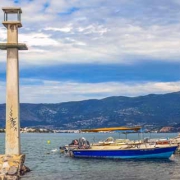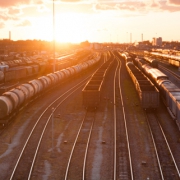The book of Elon
So, Elon has announced what he wants Tesla to do over the next years in his new strategic plan. Plus he has shown us that solar roofs can be really sexy. And Tesla’s planned takeover of Solar City shall give his new plans much-needed flesh. It’s all very grand, bombastic and ambitious – as we know it from Elon.
The grand question is if what Tesla has set out to do is realistic. The plan calls for some – yet to be developed technologies – without which the battery efficiencies required for Elon’s plan to take shape will not materialize. And on the roofing side, we have not got any hard information on their shingles allowing to pit this against less sexy competitors.
So, we all ask ourselves how long shareholders and investors will continue drinking a Kool-Aid that – with the exception of the last quarter – has not earned them a cent so far. It would almost seem like the last quarter’s earnings were produced not by Tesla’s underlying newfound profitability but rather by financial architects on steroids. And the shingle presentation awfully smells of a PR stunt prior to the all important mid-November shareholders meeting where Tesla’s acquisition of Solar City shall receive the nod.
I need to make one thing clear from this point on. Allover, I am a great fan of what Elon did and does with SpaceX. Moreover, in spite of me starting out on a reluctant foot on the Hyperloop, I also flipped over to his view on this concept idea. There will be more on my views on the Hyperloop in another post.
Back to Tesla.
According to the renowned economist Hyman Minsky – when businesses borrow money, they fall into one of three different categories. Either they are a hedged borrower – which means that the company is capable of paying all the installments for interest and for the principal from the cash flow it realizes. That’s the safest kind of borrower.
The next, lower quality group are so-called speculative borrowers which can make payments on the interest due, however, they must roll over the principal in regular intervals in order to stave off default. This is the domain of hard-nosed speculators as there is plenty of risk but it’s not yet an outright financial abyss.
The last group, however, was named the Ponzi borrower by Minsky. This one borrows money on the only foundation of the belief that the future rising value of whatever he does will be sufficient to refinance the debt. However, this borrower cannot make sufficient payments on interest or principal with the cash flow generated from the investments. This borrower needs constant injections of ever more fresh money in order to keep the machine rolling and it’s ultimately the faith of the investors that determines this borrower’s short-term fate.
Let’s look at Tesla. According to everything I can glean from publicly available financial information, Tesla has lost its investors money pretty much since its inception. We can safely tuck some little flare-ups of black ink on the companies financial statements into the realm of early excitement land and the last quarter that is being dubbed as the first written in black ink must still be repeated before the bulk of financial analysts start to rejig their assessments. Besides, this happening so short before the upcoming shareholders meeting in mid-November and the pending takeover of Solar City gives those numbers a very peculiar taste.
Now, things look soberer as even starry-eyed and star-struck early investors start to ask themselves how the company will ever turn in positive cash flow – as said, the last quarter must first be repeated.
According to publicly available numbers, Tesla cannot even cover interest payments on monies invested in it and as investors into the company (those who took shares for their money) are the ultimate creditors to the company, this may confidently be called a Ponzi-style investment, to begin with.
The magic moment, when everything will turn around and Tesla eventually churns out a product the market is going to rip out of its hands for a price that allows healthy financial records, just seems to move away quicker than the companies engineers can bring out new cost reductions for E-cars.
But Tesla is just the tip of an iceberg. Let’s just broaden our scope onto E-mobility as a whole. And for starters let me be clear on one thing right away. I am not opposed to E-mobility per se. I think that electricity has its place in transport – BUT – it is most certainly not the bane promised by starry-eyed greens. It’s still very, very expensive (just look up the price of just favorite e-zipper and its gasoline equivalent for making up jour own mind) and it still wrestles with a plethora of very hard to solve problems like easy and convenient fueling or reach. Plus, I really miss an open and honest debate on the real environmental friendliness of those vehicles.
I clearly see them in the small, short distance city zipper segment. I can also see a lot of space when it comes to robotized fleet vehicles as long as they are not too big and recharging can be modeled into the driving patterns.
However, when we get into the real heavy vehicle segment, into construction, into airplanes or ships, battery size quickly becomes an impossible riddle to wrestle with.
There are start-ups that just try to do this but the most advanced so far churns out a truck that costs half a million to buy for a measly less than 200 km on one charge. They sure claim 1500 km reach but only with a gas range extender which makes this a hybrid at best but not a clean e-vehicle. Range and easy fueling are assured by gas, not by electricity as this is also not a plug-in.
Anyone with expertise in e-mobility and honest enough to state the facts as they are will immediately confess that range and battery weight are two almost impossible to solve issues with e-mobility. Together with vehicles far more expensive from the get-go, this is a toxic brew for anyone making his money in logistics.
That would not be so bad in a normal world as those start-ups spend money and time at their own cost and risk. However, by doing so they keep the absolutely illusory hope that those concepts will be able to replace our diesel trucks and buses in the near future alive. And Elon Musk is the most potent cheerleader that stymies more aggressive developments on more promising paths such as methane based mobility for example. As long as the Emerald City can be imagined, nobody wants to work on things that work right now. And we remain stuck with the old stinkers as the new does not work yet and the old is obsolete but kept around for lack of an alternative.
Go talk to any Greeny. They refuse to even discuss the slightest improvement from diesel towards something else such as Natural Gas because it’s not perfect. They want their perfect thing and while they wait and hope, the world gets poisoned to death by diesel fumes while we have alternatives that would improve our lives dramatically if they would just be implemented.
Tesla is the poster boy among those nut bags and every twist and turn it makes is used to further the opposition to anything “just much better” because they want Lala land and if they cannot have it, everything must die.
We must engage in an honest debate on what fuel or transportation mode should be used for what. Use your e-cars for short distances and city-zipping if you want to fork out the cash to buy one. That’s great.
However, don’t condemn us all to a live in the diesel mist because you wait for paradise. Even Elon understands the value of something that delivers great work for minimum environmental damage as he uses LNG to get his dragon capsules space-bound.

















Leave a Reply
Want to join the discussion?Feel free to contribute!